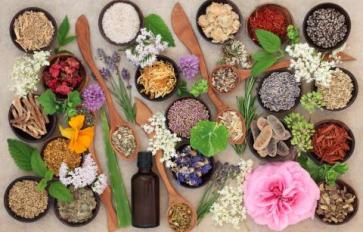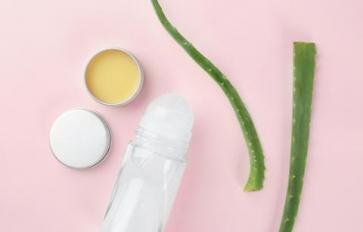
On Halloween, it's okay to play with your food: Better yet, put some on your face. Here's a simple, chemical-free recipe for face paint you could (almost) eat. After all, would you rather risk putting toxic heavy chemicals on your face? In 2009 a study conducted by Campaign for Safe Cosmetics found lead, nickel, cobalt and chromium in most children's face paint. Worse yet, the labels on these products used misleading terms like 'hypoallergenic' and 'FDA compliant,' despite containing known allergens. While this study was conducted on children's face paint, there's no guarantee 'adult face paint' found in stores is any better. To be safe, and save money, this recipe is your best bet.
Base ingredients:
- Flour
- Vegetable oil
- Water
Natural colorants (only the colors you want/need to make are the ingredients you'll need):
- Orange: carrot juice.
- Pink: beet juice. (Cook the beets in water, then strain and use the red cooking water.)
- Seafoam green: red cabbage juice. (To make, cut up the cabbage and simmer in a pot with some water for 10 minutes. Separate the juice from the cabbage by straining, then mix baking soda into it until the juice is blue. Mixed with flour, this will make a blue-green color.)
- Purple: blueberries. (Puree them, then press through a strainer to get the juice.)
- Yellow: turmeric.
- Brown: cocoa powder.
- Black: activated charcoal powder.
- White: flour and water.
- Dark green (nearly black): spirulina powder.
Directions:
- First, gather all your base ingredients. If you're only creating face paint for yourself, one bag of flour, one bottle of vegetable oil, and access to a faucet (for water) should be more than enough.
- Decide which colors you need to create. Look at the list above of colorants and assess which ones you will need for your costume. For example, if you want to look like a tiger, you would need these colorants: Carrot juice, flour and water, and activated charcoal powder (they would make orange, white, and black face paint).
- Depending on which color you have to make, you may need a liquid colorant or a powdered colorant. If you're using a liquid colorant (like beet juice, carrot juice, red cabbage juice, or blueberries), you can add a few scoops of flour to it right away, then mix it together. The amount of flour you add is up to interpretation: There's no wrong or right amount. However, the texture of the mixture you create should become similar to both liquid and paste (never doughy).
- If you're using a powdered colorant (like activated charcoal, turmeric, cocoa powder, or spirulina powder) then you'll need to add some water first. Don't add too much, just enough to dissolve the powdered colorant a bit, then add a few scoops of the flour. Mix the colorant, water, and flour together to create the same sort of texture as described in step 3. Remember: There's no wrong or right amount to add for the water, flour, or colorant. The amount you add depends on how distinct, bright, or dark you want the paint to be.
- Once you have made your desired colors, it's now paint! Feel free to apply it onto your face as you see fit. To make your experience as eco-friendly (and safe) as possible, try to invest in some cruelty-free, recycled bamboo makeup brushes - you can use these to apply the paint, or your fingers (depending on how much detail you're looking to add).
- After the paint has been applied to your face (or someone else's face, for that matter), wait at least 5-10 minutes for it to dry. When it's dry, gently apply some vegetable oil to your face using a cotton ball. Make sure to dab very carefully, so you don't smudge anything. This will help preserve the paint on your face for hours to come.








